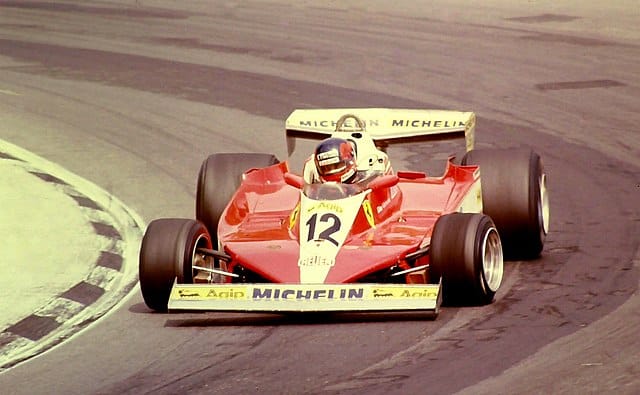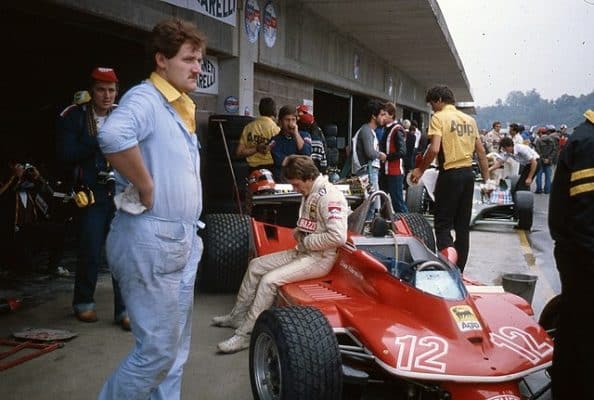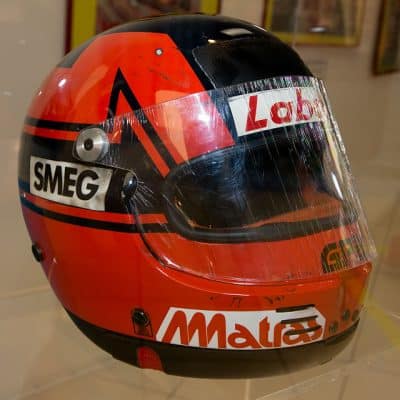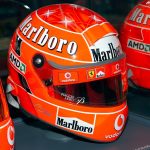In the world of Formula 1, there are drivers who are remembered for their talent and others for their personality. But only a few are able to leave an indelible mark on the hearts and minds of fans and competitors, both because of their skill and charisma. Gilles Villeneuve was one such driver, and his meteoric rise from humble beginnings in Canada to international stardom has left a lasting legacy.
Early years in Canada
Born in Saint-Jean-sur-Richelieu, Quebec, in 1950, Joseph Gilles Henri Villeneuve grew up with a passion for speed. He wanted to become a professional racer, and as a young man he raced snowmobiles, a sport that allowed him to develop exceptional reflexes and vehicle control, skills that would serve him well later in his racing career.
Of that time with snowmobiles and how it influenced his riding style, the Canadian rider said, “Every winter there were three or four big off-road vehicles, and I’m talking about being launched on the ice at 100 miles per hour. Those vehicles slid a lot, which taught me a lot about control. And the visibility was terrible! Unless you were in the lead, you couldn’t see anything with all the snow blowing around. It was good for my reflexes and kept me from worrying about running in the rain.”
Gifted with a natural talent for driving, Gilles Villeneuve began his four-wheel racing career relatively late in Formula Ford and Formula Atlantic, winning in both 1976 and 1977 before reaching the pinnacle of motorsport with his F1 debut for the McLaren team in the same racing season.
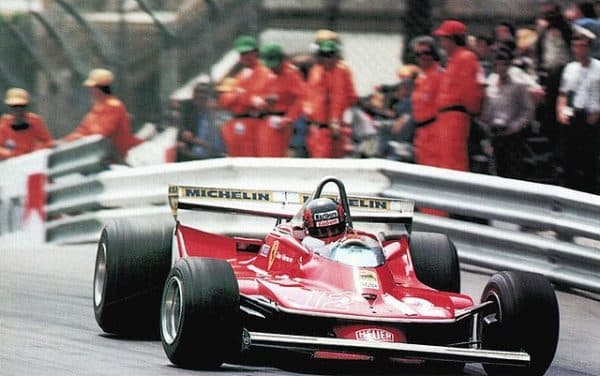
The special bond with Enzo Ferrari
Villeneuve’s talent was not long in attracting the attention of Commendatore Ferrari, who put him under contract with his team in 1977. After a brief test at Fiorano, Ferrari’s test track, Villeneuve signed an agreement with the team to drive in the last races of 1977 and throughout the following season. From then on, Gilles Villeneuve and Ferrari shared a unique bond, with Enzo affectionately referring to Villeneuve as his “little Canadian franc.” The usually gruff Ferrari developed a fatherly affection for Villeneuve.
Gilles would score six race victories for the Prancing Horse manufacturer. Villeneuve won his first race in 1978 in Canada. This was his home race and an extraordinary result for the Canadian driver, still inexperienced in Grand Prix racing. At the wheel of the “red” Gilles gave fans some of the most representative races in the entire history of F1, and sadly at the wheel of a Ferrari Villeneve also died a few years later in Belgium.
Here is what Enzo Ferrari declared after Gilles’ death: “His passing has deprived us of a great champion, whom I loved very much. My past is marked by grief: parents, brother, son. My life is full of sad memories. I look back and see the faces of my loved ones, and among them I see him.”
A unique driving style
Villeneuve’s aggressive and flamboyant driving style has distinguished him since his entry onto the scene of the
Formula 1
. The beginnings were not without incident, and before long the Ferrari driver was nicknamed“the Aviator.” His beginnings were not without incident, and before long the Ferrari driver was nicknamed “the Aviator.” Always on the edge, Gilles had a penchant for spectacular slides and breathtaking overtakes that left fans and opponents alike speechless.
Extraordinary races accidents and controversy
1979 French Grand Prix
The appetite for risk and the desire to always aim for the top found a perfect synthesis in the 1979 French race. Indeed, the Dijon circuit saw, on that distant Sunday more than 40 years ago, one of the most memorable battles in modern Formula 1 history. Villeneuve and René Arnoux faced each other for several laps, exchanging positions several times and repeatedly touching, before Villeneuve managed to prevail over the Renault driver, securing second place on the podium. The wheel-to-wheel duel between Villeneuve and Renè Arnoux has gone down in history as a testament to Villeneuve’s fighting spirit and exceptional skill, as well as Arnoux ‘s big heart , destined to join the Ferrari team a few years later.
1979 Holland Grand Prix
Also in 1979 at Zandvoort Villeneuve made an excellent start that brought him from the third row to second position behind Alan Jones, On lap 11 Gilles attacked Jones at Tarzan corner and took the lead…. On lap 47 Jones put pressure on Villeneuve, who ended up spinning. Because of the heavy stress, the Canadian’s left rear tire began to deflate, but Gilles did not care and kept pushing until a long run into the first corner caused it to fail. Villeneuve nevertheless continues on three wheels, the left rear coming off and remaining attached to the car only through the brake lines….In Holland the myth of Villeneuve.
The maneuver was harshly criticized by colleagues and insiders as too dangerous, but it once again demonstrated the charisma and approach to racing of a driver who continues to warm the hearts and minds of all Formula 1 fans who have been fortunate enough to see him race.
Enzo Ferrari would later say, “Villeneuve still makes brilliant mistakes, but he is a man who wants to get to the front at all costs. He has been rightly criticized, but we should not forget that his enthusiasm and passion have a predecessor-Tazio Nuvolari. In 1935 Nuvolari won the Brno Grand Prix in Czechoslovakia driving on three wheels.”
Imola Grand Prix of Italy 1980
In September 1980, Gilles suffered the most terrible and spectacular crash of his career at the Imola circuit during the Italian race. On the sixth lap of the race, Villeneuve’s Ferrari 312 T5 skidded just before the Tosa turn and crashed into the protective wall, bouncing destroyed in the middle of the track. The same curve is now known as Villeneuve curve, having been named after Gilles as a tribute to his career.
Jarama Spanish Grand Prix 1981 – Gilles’ last victory.
The 1981 Spanish race is famous for one of the closest finishes ever in Formula One, with Gilles Villeneuve ‘s Ferrari winning by just 1.24 seconds over the four cars that followed. It was Villeneuve ‘s last victory and is considered his tactical masterpiece.
The starting grid saw Jacques Laffite in pole position, followed by Alan Jones and Carlos Reutemann in second and third. During the race, Jones and Reutemann initially took the lead, but Villeneuve quickly moved up to third place, damaging Alain Prost’s front wing. Jones then went off the track, leaving Villeneuve in the lead and Reutemann behind him. The top five drivers remained in the lead for the rest of the race, with Villeneuve unbeatable thanks to the power of his Ferrari engine, which allowed him to gain a slight advantage on the straights and act as a stopper in the corners.
Villeneuve led all the way to the finish line, resisting pressure from his rivals for most of the race without making any mistakes, crossing the finish line just 1.24 seconds ahead of the rest of the pack, thus ending the second closest race in Formula One history.
The Imola betrayal and the tragic last race
The 1982 season was to be the season of ultimate consecration. The Italian Scuderia could count on the fastest pair in the paddock, Gilles Villeneuve and Didier Pironi, and unlike the previous year, Ferrari presented a very competitive car. At the San Marino Grand Prix in Imola, Villeneuve believed he had reached a pre-race agreement to maintain positions after the last pit stop. However, despite the agreement, Pironi passed Villeneuve on the last lap, generating a feeling of betrayal that would never be resolved.
Two weeks later, in a tragic twist, Villeneuve was killed during the final qualifying session for the Belgian Grand Prix at Zolder, his Ferrari hitting the slower car of an innocent Jochen Mass. Villeneuve had started the weekend in a bad mood: he felt that 1982 was his year to become Formula 1 world champion and after Imola he wanted to be faster than his teammate. Villeneuve died using the last set of qualifying tires, trying his best, chasing his dream.
Torquil Jones recently presented a documentary that chronicles the rivalry between Gilles and Didier and traces the events at Imola and the tragic fate of the two drivers. Pironi was also involved in an accident in the same year that spelled the end of his presence in Formula 1.
Speaking of Imola, Villeneuve said, “I think I’ve proven that, with the same car, if I want someone to be behind me … well, I think he’s behind me….”
Some statements about Villeneuve. What his opponents, journalists, technicians … and Villeneuve
“There are races that if you don’t take risks you will never win. I agree that sometimes I am rash and impetuous. That’s the way I am. Obviously if I had taken the Bosch Kurve slower, I would not have left the circuit. But if I had gone slow, I wouldn’t have been a Formula One driver. I would not have been Gilles Villeneuve.
Gilles Villeneuve on his exit from the track at the 1981 Austrian Grand Prix.
“Gilles was the only one who forced you to look for a good curve in rehearsals, because you knew that where everyone else was passing like they were on rails, Gilles was worth watching. That day in the rain at Watkins Glen was almost unbelievable! Really. He would have been said to have 300 more horsepower than anyone else. It did not seem possible. The speed at which he was traveling had nothing to do with that of others. It was 11 seconds faster! Jody was the fastest and couldn’t believe it, saying he was scared to death! I remember Laffite in the pits chuckling when Gilles passed and saying, “Why do we bother? He’s different from the rest of us. It’s a level apart.”
Nigel Roebuck
“I know no human being can perform a miracle, no one has magical properties or anything, but Gilles made you think … he was THAT fast.”
Jaqcues Laffite
“Villeneuve had the best talent of all. In whatever car you put him in, he would be fast.”
Niki Lauda
“He was an absolutely uncomplicated, non-political man without any concerns. He was totally and completely honest. If he was doing tests and the car sucked, he would come in and say, ‘Look, it sucks; I don’t mind, don’t get me wrong, I’m going to drive it all day and I’m going to love every minute of it, but I thought you should know the car sucks.’ The Old Man (Ferrari) loved her for that.”
Harvey Postlethwaite
“The duel with Gilles is something I will never forget, my greatest racing memory. You can only race like that with someone you trust completely, and you don’t meet many like him. He beat me, yes, and in France, but it didn’t worry me: I knew I was beaten by the best driver in the world.”
Rene Arnoux recounts his classic battle with Gilles Villeneuve in Dijon, France, 1979.
“I couldn’t believe it. That guy didn’t want to accept that he was beaten. I sweated like crazy to gain a couple of seconds on him, relaxed a little in a couple of turns, and there he was in my mirrors again. That damn red bucket of **** was on my tail! I had to keep running hard all the way to the finish line, because I knew if I let him pass there would be no second chance to get back in the lead! ”
Legacy and continued fan love
Despite a relatively short career, from 1977 to 1982, Gilles Villeneuve’s memory endures to this day. His never-say-die attitude, bold driving style and sheer passion for racing have inspired generations of fans and drivers, and many of today’s four-wheel stars cite Villeneuve as a reference point. In a sport that has seen many heroes, Gilles Villeneuve’s name continues to be an icon. His unwavering determination, love of racing and fearless approach to life have left an indelible mark on Formula 1.
The iconic helmet and the number 27
Villeneuve’s iconic helmet, featuring a simple design with a conspicuous “V ” on the front, is still instantly recognizable today. The use of the number 27 on his Ferrari became synonymous with his career and has endured. Since then, both fans and drivers hold the number 27 in high regard and some consider it an honor to wear it on their cars.
The family and sporting achievements of Jacques Villeneuve
Gilles Villeneuve ‘s passion for racing extended to his family, with his son Jacques Villeneuve following in his footsteps. DNA is quality. Jacques would go on to achieve great success in motorsports, carrying the Canadian flag high, winning the 1995 IndyCar championship, the 1995 Indianapolis 500, and finally the F1 World Championship in 1997 with Team Williams, accomplishing a feat that had eluded his father.
Remembering Gilles Villeneuve
As Formula 1 continues to evolve and new stars emerge, it is important to remember the legends who laid the foundation for the sport’s enduring success. In recent years, tributes to Villeneuve have become a tradition at the Canadian Grand Prix in Montreal, which renamed the circuit in his honor in 1982 and where the Salut Gilles is displayed at the starting line. Fans around the world gather to celebrate his memory and share their appreciation for his contribution to Formula One.
Some drivers, such as Fernando Alonso and Charles Leclerc, have cited Villeneuve as a childhood hero and as a driver who inspired them to pursue a career in motorsport.
The rise: a story of passion and perseverance – the revenge of the underdog
The journey of Gilles Villeneuve from snowmobile racing in the harsh Canadian winters to dominating the world’s most prestigious racing series is a story of passion, perseverance and unwavering determination that reminds us that, even in the face of adversity, success is possible with hard work and dedication.
Villeneuve ‘s meteoric rise is an inspiration not only for aspiring drivers who aspire to become F1 world champions, but also for all those who pursue their dreams, however far away they may seem. This is perhaps the greatest legacy the little Canadian left for future generations.
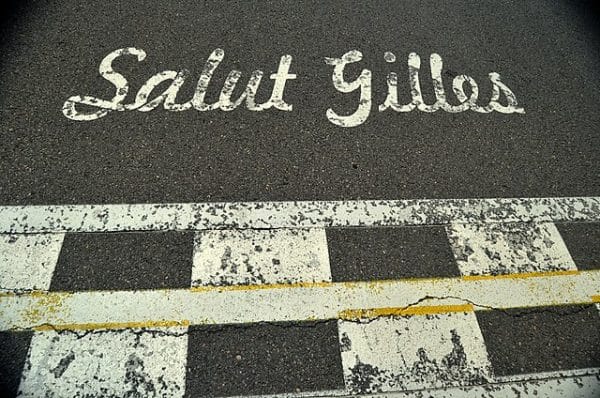
Pictures from the top: 1979 Monaco Grand Prix Ferrari 312T4 Gilles Villeneuve, Date 27 March 2016, Source https://www.flickr.com/photos/jolevnikk/29082474690/AuthorJohn Martin Lee from London, UK, Creative Commons Attribution-Share Alike 2.0, Gilles Villeneuve - Ferrari 312T3 at Druids at the 1978 British Grand Prix (50049695703).jpg ideogibs, Creative Commons Attribution-Share Alike 2.0, Gilles Villeneuve imola 1979.jpg Copy, File:Gilles Villeneuve imola 1979.jpg|Gilles_Villeneuve Morio, Creative Commons Attribution-Share Alike 3.0, Gilles Villeneuve helmet Museo Ferrari.jpg Copy, Gilles Villeneuve helmet Museo Ferrari.jpg|Gilles_Villeneuve_helmet_Museo_Ferrari]]Copy, February 25, 2013 The Circuit Gilles Villeneuve in Montreal, Maria Azzurra Mugnai, Creative Commons Attribution-Share Alike 3.0, Circuit Gilles Villeneuve MAM2.JPG Copy, August 2007













